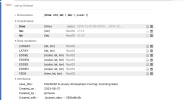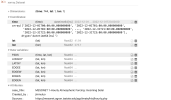Hi Sam,I do not have much experience looking at datm code, so you will need to investigate yourself or ask someone else.
Alternatively, it may be easier to initially compare the structure of your file in detail against one of the equivalent files provided with the CTSM. Try to look for anything that looks different that might explain a failure.
Thank you for your suggestions. I guess one difference between my dataset with the GSWP3 is the time format, it has to be cftime.DatetimeNoLeap?
array([cftime.DatetimeNoLeap(2014, 12, 1, 0, 0, 0, 0, has_year_zero=True),
cftime.DatetimeNoLeap(2014, 12, 1, 3, 0, 0, 0, has_year_zero=True),
cftime.DatetimeNoLeap(2014, 12, 1, 6, 0, 0, 0, has_year_zero=True), ...,
cftime.DatetimeNoLeap(2014, 12, 31, 15, 0, 0, 0, has_year_zero=True),
cftime.DatetimeNoLeap(2014, 12, 31, 18, 0, 0, 0, has_year_zero=True),
cftime.DatetimeNoLeap(2014, 12, 31, 21, 0, 0, 0, has_year_zero=True)],
dtype=object)
another question is the dimension of the dataset, what's the meaning of this scalar?



